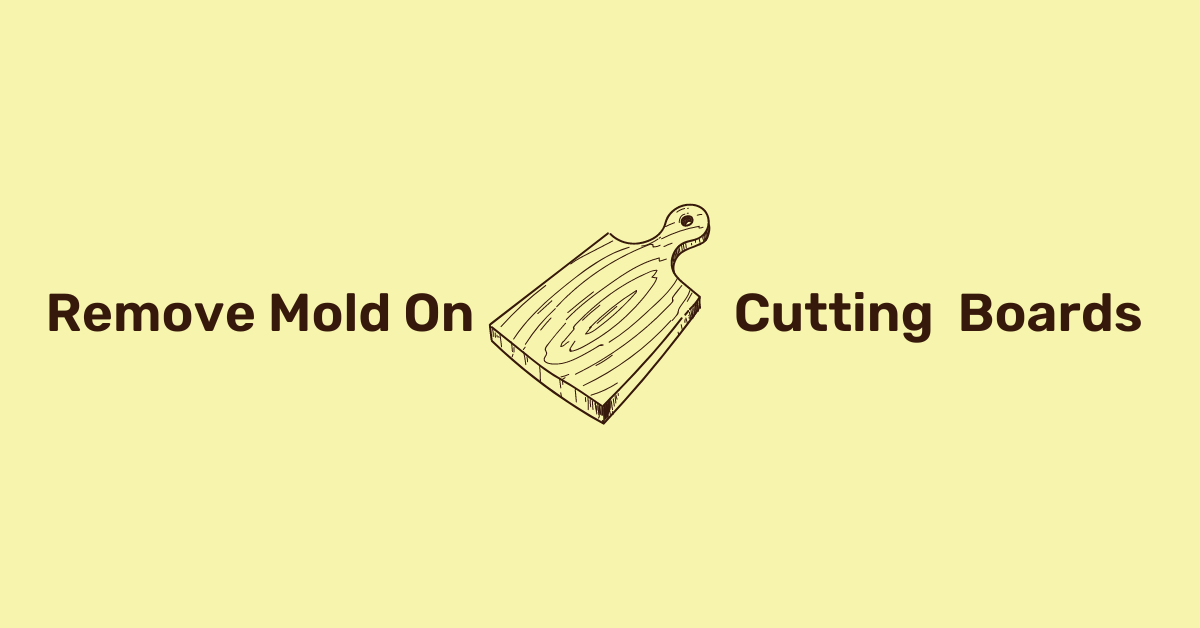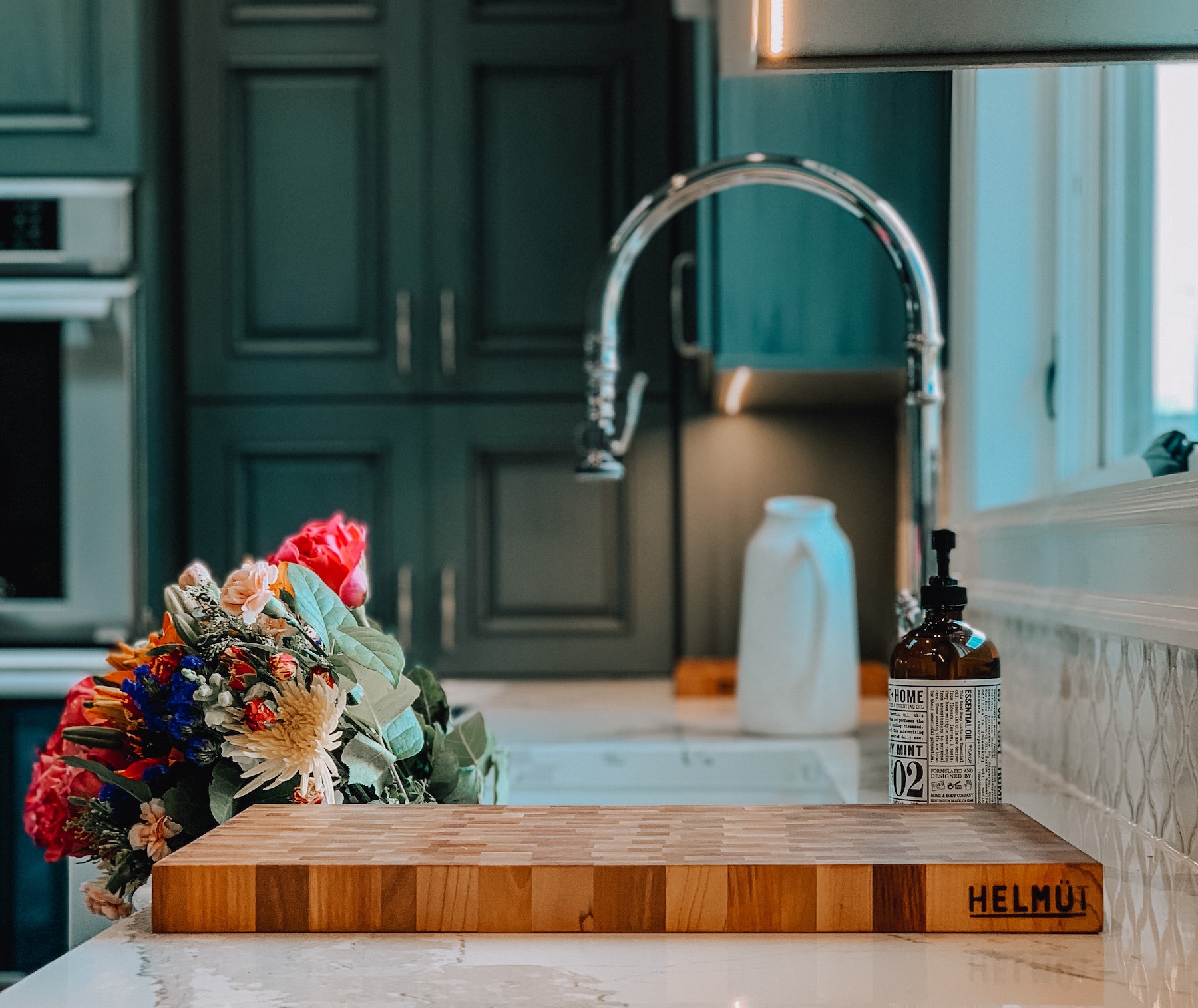How To Remove Mold from Cutting Board Once and For All

Most cooking enthusiasts tend to have a favorite cutting board among the many they own. It could be a perfect size, have a unique shape, maybe they invested a lot in that vintage board, or it might help chop vegetables more efficiently.
But what happens when mold starts to grow on it? Do you need to throw away your favorite cutting board, or is there a way to salvage it? Well, fret not, because you can read on to learn how to remove mold from a cutting board and make it as good as new!
Removing Mold From A Cutting Board in 5 Easy Steps
While you may have invested in a plastic cutting board instead of the conventional wooden one as it is less porous, both are prone to developing mold. Here, following a regular cleaning routine is imperative to keep your boards clean and prevent mold growth.
Follow these 5 steps to get rid of mold from your cutting board:
Rinse With Soap And Water

Start by rinsing the cutting board with soap and hot water. This will help remove the debris from vegetables and fruits that the cutting board has been used for.
You only need a little dish soap, hot water, and a damp cloth to scrub the cutting board. While you may feel the urge to submerge the entire board in water simply, it’s best to avoid it. Excessive water exposure may cause a wooden board to split.
Go Natural With Salt And Lemon
How do you get black spots off a cutting board? If you notice mold and black stains on the cutting board, it’s time to bring out two of the most effective natural cleaning ingredients – lemon and coarse salt.
Sprinkle two spoonfuls of kosher salt on a dry cutting board, and use a half lemon to scour the surface. Let the mixture sit and activate for 5 minutes before scraping it into a bowl. Rinse the cutting board with a wet sponge and allow it to air dry.
Take The Help Of White Vinegar
If your cutting board has severe mold that’s hard to clean, you may need to try something stronger. While most people think bleach is the solution to mold, you can alternatively use white vinegar, a more natural solution. Vinegar contains a mild acid that can treat many types of mold.
Add distilled white vinegar into a spray bottle and spray it directly over the affected area. Leave it untouched for 1-2 hours. If the mold is stronger, you can add 1 teaspoon of baking soda to 2 cups of water and apply this paste to the mold using a toothbrush and scrubbing motion. Let it soak for an hour, then rinse the cutting board with warm water. You can also respray white vinegar if you feel the need.
Others are also reading: What’s the Best Cutting Board Size for You?
Try A Hydrogen Peroxide Solution
Another way to take care of stubborn mold is to use a hydrogen peroxide solution. A 3% hydrogen peroxide solution can not only kill the mold on the cutting board’s surface, but is also better for the environment when compared to chemical cleaning products.
Add the hydrogen peroxide solution to a spray bottle. Spray it well until the board is saturated, and leave it on for 10 minutes. Use a sponge to scrub the mold stains. Lastly, wash the board with warm water, and dry it with a towel.
End With Tea Tree Oil
People often talk about oiling a wooden cutting board, but you can’t just use any oil. Antifungal oil, like tea tree, is a great option here. Dilute one teaspoon of tea tree oil in a cup of water and spray it directly on the board. Leave it for an hour, and then, if you still see any mold left, you can use a toothbrush to scrub it off. Make sure to wash the cutting board after and allow it to dry before using it again.
How To Prevent Mold From Forming on Your Cutting Board?
Although you can care for the mold growing on your cutting board, it’s best to prevent it altogether. You can keep the following tips in mind when using cutting boards to avoid the formation of mold:
Wash Properly
If you often wonder why is there mold on my cutting board? It could be because it’s not being cleaned properly after each use. Washing a cutting board is imperative to maintaining a sanitary board.
You can use a dishwasher to clean a glass or plastic cutting board. For wooden cutting boards, only wash by hand, and dry using a clean towel to remove excess moisture.
Allow the board to air dry in a drying rack upright to ensure airflow circulates properly. You can also plan to clean the cutting board with white vinegar deep weekly.
Avoid Meat
If you want to keep wooden or even scratched plastic chopping boards clean, avoiding using them for cutting raw meat is best. Meat juices can soak into the wood grain and seams, and in the scratches on plastic boards, along with bacteria. To prevent this, opt for an alternative board.
Oil It Well
Wooden cutting boards and butcher blocks require regular oil coating to stay clean and mold-free. Once every month, you can soak a clean cloth in mineral oil and rub it into the cutting board. Liberally apply the oil, and let the wood soak for 5-6 hours before wiping off the excess oil with a towel.
No More Moldy Cutting Boards!
Cutting boards have a special place not only in a kitchen but also in a chef’s heart. Even the best knives are useless if your cutting board has mold. Now that you’re aware of how to remove mold from cutting board, it’s time to bring out your cleaning supplies and say goodbye to mold!

I’m the founder and CEO of Yahshi Bakes, a Bay Area-based bakery popup I started in 2015. I grew up in the kitchen as if it were my living room, and I enjoy making delicious food to share with the people I love. I love traveling and exploring the rich flavors of other cultures- from music to curry and everything in between!
